FLAG KNOWLEDGE
How much do you know about American Flag Etiquette?
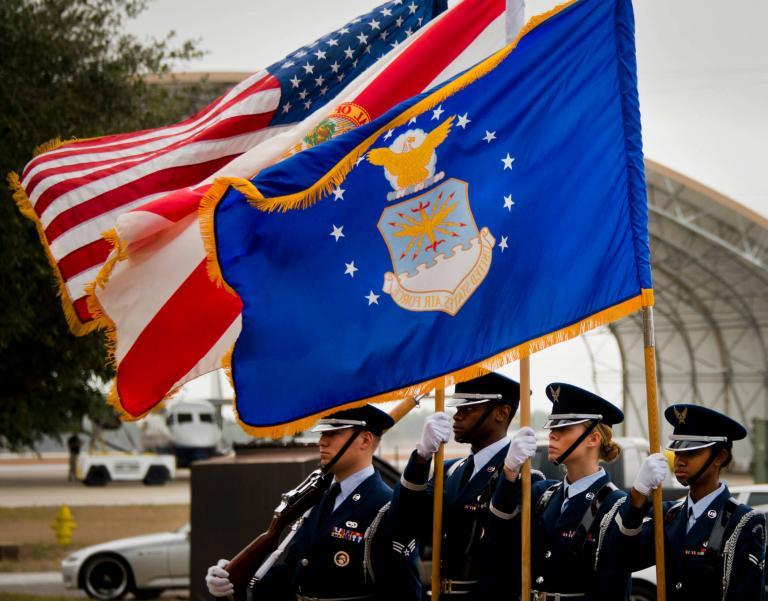
As a country needs legislation, everything needs its regimen, so do the American flag, which has its etiquette.
The US Flag Code formalizes and unifies the traditional ways in which we give respect to the flag, and also contains specific instructions on how the flag is not to be used.
In the following article, you will see 12 rules and guidelines for displaying the American flag and treating it with proper respect.
- Display the flag only between sunrise and sunset on buildings and stationary staff. The flag may be displayed for twenty-four hours if illuminated in the darkness.
- Place the U.S. Flag above all other flags when placed on a single staff or lanyard.
- When flags are displayed in a row, the U.S. flag goes to the observer’s left. Flags of other nations flew at the same height. State and local flags are traditionally lower.
- When used during a marching ceremony or parade with other flags, the U.S. Flag will be to the observer’s left.
- On special days, the flag may be flown at half-staff. On Memorial Day, it is flown at half-staff until noon and then raised.
- When the flag is displayed over the middle of the street, it should be suspended vertically with the union (blue field of stars) to the north in an east and west street or to the east in a north and south street.
- When the flag is displayed over the middle of the street, it should be suspended vertically with the union (blue field of stars) to the north in an east and west street or to the east in a north and south street.
- When placed on a Podium, the flag should be set on the speaker’s right or the staging area. Other banners should be put to the left.
- When displayed either horizontally or vertically against a wall (or another flat surface), the union (blue field of stars) should be uppermost, and to the flag’s right, that is, to the observer’s left.
- When displayed in a window, it should be displayed in the same way — with the union or blue field to the left of the observer in the street.
- When the flag is displayed on a car, the staff shall be fixed firmly to the chassis or clamped to the right fender.
- When the flag is used to cover a casket, it should be placed that the union is at the head and over the left shoulder. The flag should not be lowered into the grave or allowed to touch the ground.
A quick list of Flag Etiquette Don’ts:
-
Dip the U.S. Flag for any person, flag, or vessel.
-
Let the flag touch the ground.
-
Fly the flag upside down unless there is an emergency
-
Carry the flag flat, or carry things in it.
-
Use it as a cover.
-
Fasten it or tie it back. Always allow it to fall free.
-
Draw on or otherwise mark the flag.
-
Use the flag for decoration. Use bunting with blue on top, then white, then red.
The Salute
To salute, all persons come to attention. Those in uniform give the appropriate formal salute. Citizens not in uniform salute by placing their right hand over the heart, and men with head cover should remove it and hold it to the left shoulder, hand over the heart. Members of organizations in formation salute upon command of the person in charge.
The Family Presentation
Each service branch of the American military has a different speech when presenting the flag to the deceased’s family. Almost all of them are presented on behalf of the President of the United States and the country. This practice is an integral part of the process of military honors.
The Pledge of Allegiance and the National Anthem
The pledge of allegiance should be rendered by standing at attention, facing the flag, and saluting. When the national anthem is played or sung, citizens should stand at attention, salute at the first note, and hold the salute through the last note. The salute is directed to the flag, if displayed, otherwise to the music.
The Flag in Mourning
When used to cover a casket, the flag should be placed with the union at the head and over the left shoulder. It should not be lowered into the grave.
The flag will be flown at half-staff in mourning for designated principal government leaders and upon presidential or gubernatorial order.
To place the flag at half-staff, hoist it to the peak for an instant and lower it to a position halfway between the top and bottom of the staff. The flag is to be raised again to the peak for a moment before it is lowered. On Memorial Day, the flag is displayed at half-staff until noon and at full-staff from noon to sunset.
How To Properly Dispose Of An American Flag
When the flag is in such condition that it is no longer a fitting emblem, it should be destroyed dignified and ceremoniously, preferably by burning. The American Legion holds an annual ceremony to retire old or worn flags; contact your local chapter if you cannot dispose of the flag yourself.
What time of day can I display the flag?
Customarily, the flag should be displayed only from sunrise to sunset. However, the flag can be displayed 24 hours a day if it’s adequately illuminated at night.
How does the weather affect when I display the flag?
Do not display the flag during inclement weather except when an all-weather flag used.
Want to learn more? This short video will help you learn how to correctly display and respect the United States Flags.


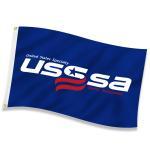 Custom Flags
Custom Flags Garden Flags
Garden Flags Mini Flags
Mini Flags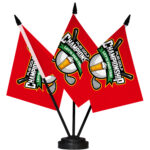 Desk Flags
Desk Flags Feather Flags
Feather Flags Teardrop Flags
Teardrop Flags Rectangle Flags
Rectangle Flags Vinyl Banners
Vinyl Banners Mesh Banners
Mesh Banners Pole Banners
Pole Banners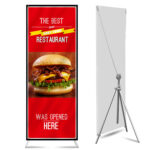 X Banners Stand
X Banners Stand Retractable Banner
Retractable Banner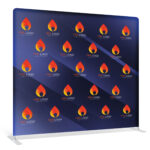 Backdrop Banners
Backdrop Banners Yard Signs
Yard Signs Aluminum Signs
Aluminum Signs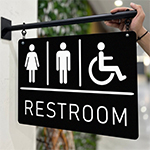 Plastic Signs
Plastic Signs Vinyl Lettering
Vinyl Lettering Car Decals
Car Decals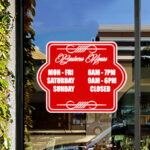 Window Decals
Window Decals Floor Decals
Floor Decals